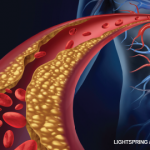NEW YORK (Reuters Health)—Technologists working in nuclear medicine have a heightened risk for some cancers and myocardial infarction, according to a nationwide U.S. survey led by National Cancer Institute (NCI) researchers.
“Our results were mainly driven by exposures occurring before 1980, which is consistent with evidence that most cancers and other serious radiation-related chronic disease risks are generally not observable until many years after exposure,” Dr. Cari M. Kitahara, of the NCI’s Radiation Epidemiology Branch in Rockville, Md., and the study’s lead investigator, told Reuters Health by email.
“Additionally,” she said, “occupational exposures, in general, have declined over time, owing primarily to changes in technology and improved standards for radiation safety.”
The questionnaire-based study, published online July 28 in Occupational and Environmental Medicine, included 90,955 radiology technologists; 77% were women, and 24% worked with radionuclides.
The hazard ratio for squamous cell cancers of the skin was 1.29 in workers who ever performed diagnostic nuclear medicine procedures, compared with those who did not. The HR for myocardial infarction (MI) was 1.37 in workers who performed brachytherapy procedures, compared with those who had not.
All-cause mortality and mortality from all cancers (except nonmelanoma skin cancer) were 10% and 20% higher, respectively, in workers performing brachytherapy. For workers who performed radionuclide therapy procedures not involving brachytherapy and radioactive iodine, HRs were 1.14 for all cause mortality, 2.68 for female breast cancer death, and 1.76 for fatal MI.
Working with radioactive iodine did not increase any health risks.
When all the nuclear medicine procedures were put together, investigators discovered a 13% higher all-cause mortality and 37% greater lung cancer mortality.
Dr. Rebecca Smith-Bindman, director of the Radiology Outcomes Research Library at the University of California, San Francisco, told Reuters Health by email, “The study is important and confirms what might have been expected; there are small, but real adverse outcomes, including an increase in cancer mortality and myocardial infarction mortality, among exposed technologists.”
She added, “While the authors call for more research, the lesson we should take from this study is clear: the doses we use in medical imaging are associated with small but real risk of harm and that it is important to minimize the radiation exposures. Further, it is important for technologists who perform these tests to receive consistent and accurate information to protect themselves and minimize their risks.”


